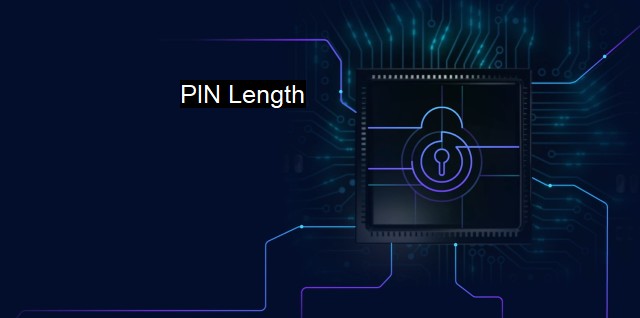What is PIN Length?
The Power of Length: Enhancing Cybersecurity with Strong PIN Codes to Protect Against Data Breaches and Hacking Attacks
PIN length is a significant factor in the context of cybersecurity and antivirus; it is a crucial aspect of data protection that maintains security in many systems worldwide. An acronym for Personal Identification Number, a PIN is a numerical or alpha-numerical password which is utilized throughout information systems as an authentication method, ensuring only authorized individuals can access particular data.The length of a PIN greatly influences its security effectiveness. Generally, the longer the PIN, the more secure it is considered, due to the increased number of potential combinations. Commonly, PINs range from four to six characters, though they can be longer in certain circumstances to bolster security further. For instance, a four-digit PIN has 10,000 possible combinations, while a six-digit PIN possesses a million, if not considering any other restrictions.
Practically, a longer PIN is harder for unauthorized people to guess or crack, limiting the likelihood of successful unconsented access. This difficulty spike arises from the factor of computational complexity, which increases exponentially with added PIN length. Hence, a substantial leap occurs regarding possible combinations even with a single extra digit or character, making longer PINs exponentially more difficult to breach.
It's worth addressing the flaws and risks associated with PIN usage, inherently eroding their security credibility. Notably, PINs that are easily guessable or patterns that are too simple, such as consecutive numbers or repetitive numerals, weaken PIN's security despite their length. Also, if a said authorized user writes down this PIN somewhere easily accessible, it bypasses and renders the concept of the secure PIN useless. Thus, a balance between ease of recall and security needs to be achieved.
Usage of sophisticated algorithms and models built into cybersecurity and antivirus systems combat these PIN-related vulnerabilities. These systems use random functions and pattern recognition predictors designed to generate unpredictable, nonsystematic numeric strings for PINs, which are difficult to crack given their randomness while still retaining their usability. They discourage or limit the creation of overly simple or easily predictable PINs, further reinforcing the privacy they aim to uphold.
Antivirus and cybersecurity systems often lock a user’s account after a specified number of failed PIN entry attempts, attenuating the benefits a malicious hacker could gain from a brute force attack. Brute force attacks, where a hacker tries every possible combination until successful, are arguably more feasible on shorter PINs but can be costly in terms of time, hence longer PINs offer a deterrent effect.
Crafting PINs with alphanumeric combinations can substantially enhance security. By using both numbers and letters, the possible codes expand massively beyond the standard 0-9 range that a numeric PIN would employ, making them stronger against potential cyber incursions.
Multi-factor authentication (MFA) can be employed to enhance the PIN's security role. MFA includes the presentation and validation of at least two evidence or credentials for user verification from different categories of factors; these could be, for instance, something you know (like a PIN or password), something you have (like a security token), or something you are (like a fingerprint).
Contextually, modifying the length of a PIN enhances the security landscapes of many digital platforms, spanning from banking to mobile devices, credit card transactions, and secure door entry systems. Each relies heavily upon the security bound to the secrecy and complexity that a well-structured PIN provides.
PIN length is a critical factor in elevating protection against potential threats in our increasingly digital and interconnected world. While there are many strategies to enhance their efficacy, including increasing PIN length, decreasing predictability and implementing multi-factor authentication, a PIN should be perceived as part of the broader suite of tools dedicated to data security and privacy, rather than a silver bullet solution. As cyber threats continue to evolve, so too must our strategies to ensure secure access and protect sensitive data.

PIN Length FAQs
What is the ideal length of a PIN for cybersecurity and antivirus purposes?
The ideal length of a PIN for cybersecurity and antivirus purposes is at least 8 digits or characters.What are the risks of using a short PIN?
Using a short PIN can make it easier for cybercriminals to guess your password, leaving your device and personal information vulnerable to hacking and theft.Do longer PINs provide better protection against cyber attacks?
Yes, longer PINs provide better protection against cyber attacks. The longer the PIN, the more difficult it is for cybercriminals to crack it.Can I use the same PIN for multiple accounts?
It is not recommended to use the same PIN for multiple accounts. This is because if a cybercriminal is able to crack or obtain your password for one account, they will be able to access all the accounts that use the same PIN.| | A | | | B | | | C | | | D | | | E | | | F | | | G | | | H | | | I | | | J | | | K | | | L | | | M | |
| | N | | | O | | | P | | | Q | | | R | | | S | | | T | | | U | | | V | | | W | | | X | | | Y | | | Z | |
| | 1 | | | 2 | | | 3 | | | 4 | | | 7 | | | 8 | | |||||||